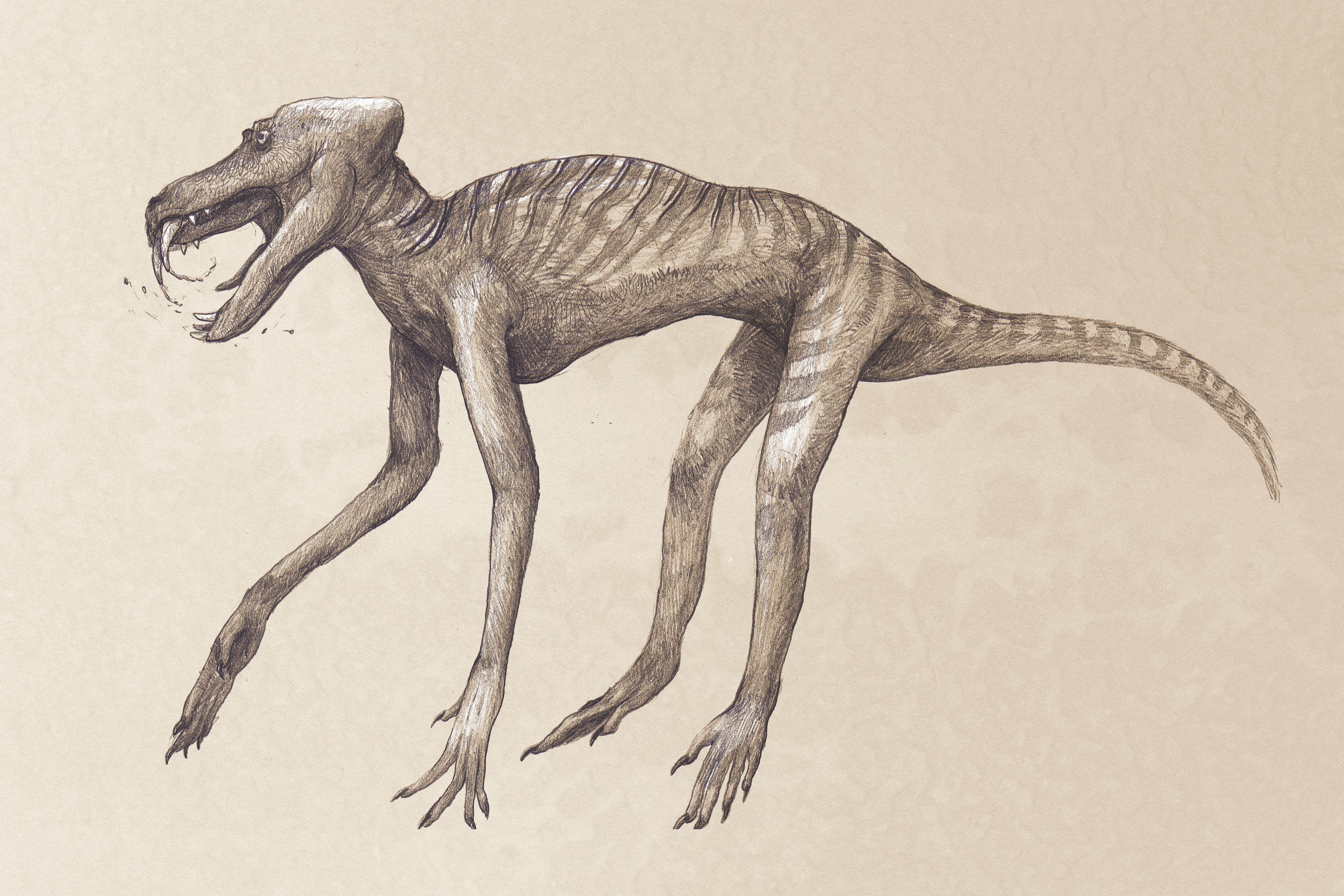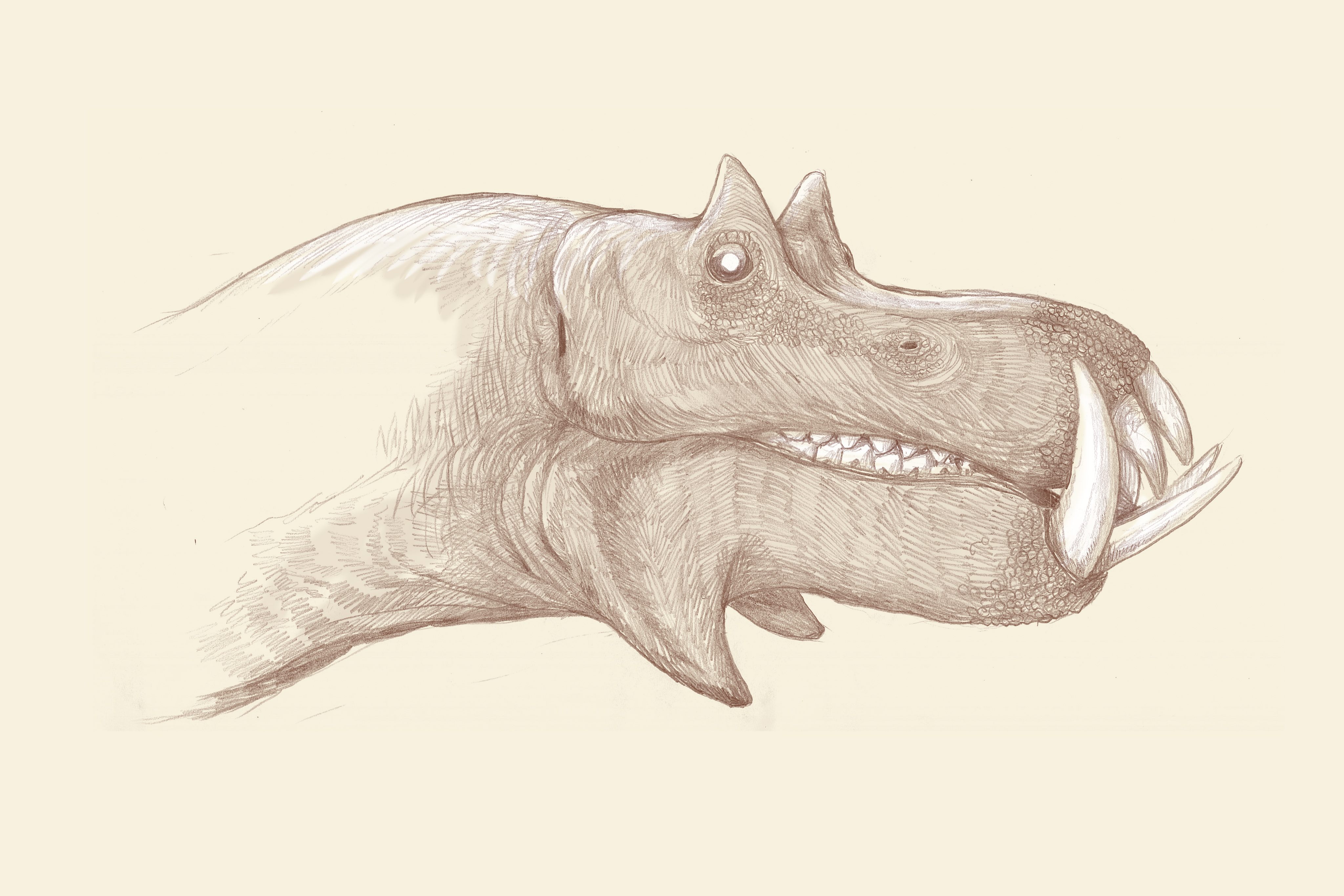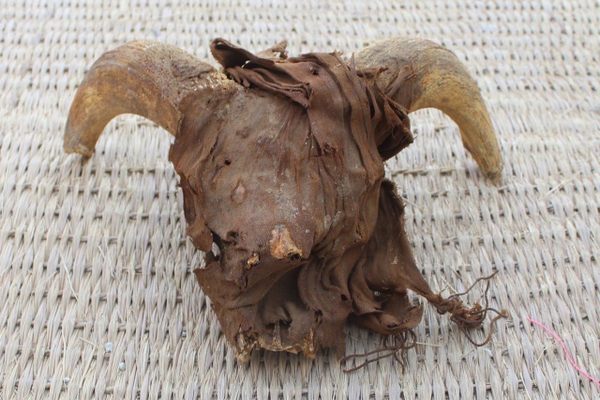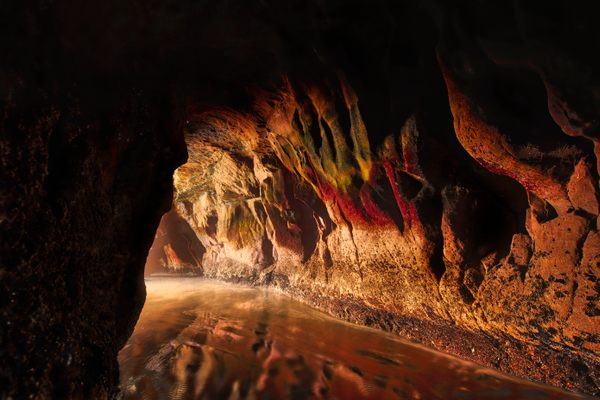The Bad Hair, Incorrect Feathering, and Missing Skin Flaps of Dinosaur Art
Inside the pitfalls of illustrating prehistoric creatures.

Illustrating long-extinct creatures is difficult, but important work. With no living specimens to observe, it’s up to “paleoartists” who draw, paint, or otherwise illustrate the creatures of prehistory as we think they might’ve been. Their work is the reason that when we talk about velociraptors, stegosaurs, or even woolly mammoths, we have some idea of what they looked like.
But since all we have to go on are fossils, deciding how a dinosaur would have looked is as much art as it is science. And there’s at least one paleoartist who thinks we might be getting things wrong.
C.M. Kosemen is an Istanbul-based artist and author (along with John Conway and Darren Naish) of the 2012 book, All Yesterdays: Unique and Speculative Views of Dinosaurs and Other Prehistoric Animals. A long-time creature designer, Kosemen had always had an interest in dinosaurs, but he embarked on his book with Conway after they began to realize that something was a bit off. “We were both dinosaur geeks, but the more we looked at these skeletons, and the more we looked at the pictures, we noticed that most mainstream dinosaur art didn’t look at dinosaurs as real creatures,” says Kosemen.
Most serious paleoart bases itself on the detailed findings of paleontologists, who can work for weeks or even years compiling the most accurate descriptions of ancient life they can, based on fossil remains. But Kosemen says that many dinosaur illustrations should take more cues from animals living today. Our world is full of unique animals that have squat fatty bodies, with all kinds of soft tissue features that are unlikely to have survived in fossils, such as pouches, wattles, or skin flaps. “There could even be forms that no one has imagined,” says Kosemen. “For example there could plant-eating dinosaurs that had pangolin or armadillo-like armor that wasn’t preserved in the fossil. There could also be dinosaurs with porcupine-type quills.”

Rarely do we see that type of variation in depictions of dinosaurs. In many ways, there is a certain amount of uniformity in the way we think of dinosaurs, which creates some common tropes in paleoart that Kosemen thinks could improve.
One of his main points of contention is the way that we consider dinosaur heads. “The reference has always been crocodiles,” says Kosemen. “The biggest thing is teeth and facial fat. Readers have to be aware that all dinosaurs they see in all media, and especially in popular culture, seem to have their heads flensed. They’ve always got these weird grins with only the teeth visible.” As he points out, most animals have lips and gums and lumps of facial fat that change the profile of the head, and cover the teeth. But in many predatory dinosaur illustrations, these are usually missing, making them look fierce, if improbable.
“Another trope is what I like to call the ‘roadkill hair’ trope,” says Kosemen. Some fossils show signs of hair, which Kosemen says can lead to artists illustrating their creatures with hair only on the parts where it was found on a fossil. However, it’s possible that some dinosaurs had much more hair that they are usually shown to have. “Imagine if you found a raccoon, and only half of the tail was covered in hair, so then you carry that over to a living reconstruction.”
A similar issue occurs with the relatively recent trend of giving dinosaurs feathers. While it is a good way to add some color and flair to an illustration, the placement and length of dinosaur feathers is often based more in fantasy than any past reality. “We have full-on wing feathers erupting from distinct places on the head. Or things like a raptor dinosaur jumping like a ninja and his feathers are coming out of his elbows or knee joint or those weird things,” says Kosemen. He thinks that sometimes dinosaurs are over-feathered, with plumage where it doesn’t belong, or under-feathered, being too conservative with the overall coverage.

There is also the practice of what he calls “feather dressing,” where an artist will transfer the color palette of a living bird’s feathers over to a dinosaur. Given the diversity and unique colorations that belong to single varieties of birds, it’s unlikely that any dinosaur shared the same hues. “The feathers of a green-headed mallard exist only once in nature,” says Kosemen. “There’s no way in the world that a specific bird’s clothing would be replicated in a dinosaur in the past.”
Then there is the issue of proportion. Kosemen says that there is a tendency to exaggerate the heads and claws of dinosaurs. Certainly many dinosaurs had large claws, and fearsome heads, but in many pictures, they seem to be almost cartoonishly huge. “Artists sometimes do this semi-unconsciously because they want to depict the head and the claws, the business end of the thing,” he says.
None of this is to say that paleoart is failing at its job. Many of the more improbable aspects of current dinosaur illustration make the beasts seem rather more sensational, and in some ways more attractive, helping to keep future generations interested in paleontology. Dinosaurs look cool.

And the problems with depicting the creatures of the past aren’t going anywhere. It’s likely that far-future paleoartists will have similar problems with creatures we take for granted today. It’s conceivable, for example, that future paleoartists will speculate that turtles once left their shells, or that frogs, with their weird legs, used to run around upright. “There’s going to be all sorts of reconstructions with reindeer antlers having strange membranes or juvenile reindeer jumping from cliffs, using their horns as paragliders,” says Kozeman.
Short of a Jurassic Park-style clone scenario, we might never know exactly what dinosaurs looked like. But until that day, we have artists like Kozeman to continue dreaming up the endless variations of the prehistoric animal world, by taking a cue from the creatures in our own backyards. “Do not imitate them, but see what other shapes they could take.”
For more paleoart goodness, check out our discussion about illustrating ancient sharks with Allen John Gregory.
Correction 9/22: Previously we did not credit Darren Naish as on author of All Yesterdays. His name has been added.































Follow us on Twitter to get the latest on the world's hidden wonders.
Like us on Facebook to get the latest on the world's hidden wonders.
Follow us on Twitter Like us on Facebook